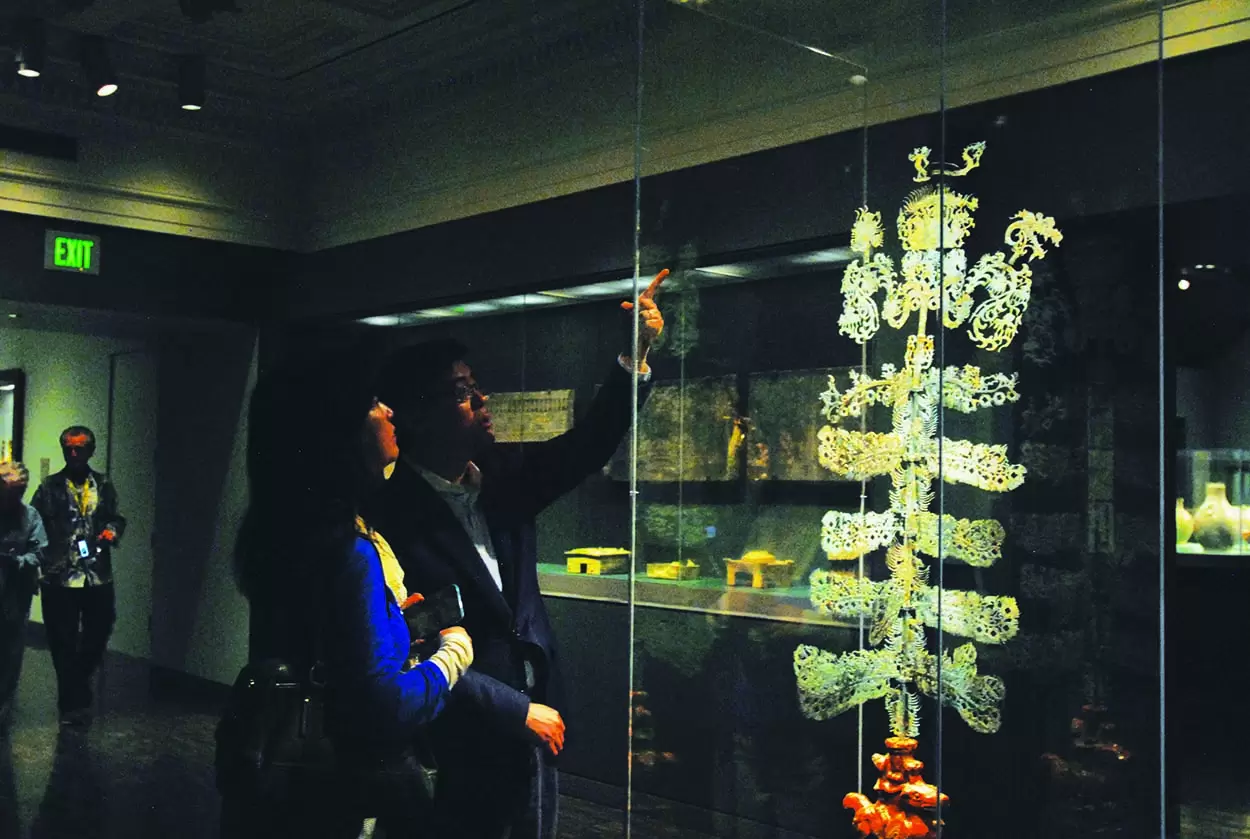
By Lillian Zheng, Morgan Bradley
San Francisco literally translated in Chinese means The Old Golden Mountain (旧金山). It might be the only city in the Western world to be given a special Chinese name that every Chinese can connect to.
The city has served as host to the Qing Emperor’s envoy Li Hung Chang, the famous Chinese revolutionary Sun Yat-sen, Madame Chiang Kai-shek, and many other influential Chinese history makers. If the world is a dramatic play of gigantic proportions, then San Francisco has undoubtedly served as one of the main stages.
During our modern time, the city has become home for Asian American entrepreneurs such as Yahoo’s founder Jerry Yang, YouTube’s creator Steve Chen, and other Chinese tech-enthusiasts chasing their silicon dreams. However, this City of The Old Golden Mountain is still hiding a great treasure that many Chinese might easily overlook– the Asian Art Museum – the largest museum dedicated to Asian art outside of Asia.
Slightly removed from the high-tech frenzy around Silicon Valley, Jay Xu, the first Chinese museum director in the West, is busy with the business of decoding the vast collection of Asian art pieces, helping the public to understand their true and hidden significance. In Jay’s opinion, such an important task is never quite done. “So many treasures still in the ground, waiting to be discovered.” he explains.

The museum itself is situated in the center of San Francisco, across from the historic landmark of City Hall. It contains three full floors of treasures and masterpieces from all across Asia, with the Chinese collection being the largest.
When I first walked into Jay’s office, my eyes were drawn to a picture of a bronze rhinoceros, hanging next to his desk. Its importance could have easily passed me by if Jay had not passionately disclosed its significance.
“It’s an ancient Chinese bronze vessel made about 3,000 years ago. It’s in the shape of a rhinoceros. This is the only Chinese, ancient Chinese, bronze of that age. It’s in the shape of a rhinoceros. That’s a one of a kind. No object made in the shape of a rhino has survived except this one.” said Jay.
From Jay I learned that this type of bronze vessel was probably used as a container serving wine or food. There is also an inscription on the bottom of the vessel, the Rhinoceros’s belly. The inscription records the story of a high‐level official who went on an expedition with the king. When they came back, the King bestowed upon him cowrie shells, a form of valuables, as a reward. In commemoration of this honor, the official commissioned the vessel. The inscription has helped decode the significance of this historical event, and has helped date the vessel as part of the Shang Dynasty.
Today, in China, we can only find rhinoceroses in zoos, having been shipped from Africa. Yet 3,000 years ago, during the Shang Dynasty (1600 BCE–1046 BCE), there was a thriving rhino population in China!
According to Jay, “The artists can connect ancient times with today – for example, our bronze rhino 3,000 years ago. It will raise the question: China had rhinos at that time? Why don’t we have rhinos anymore? So I see this ancient masterpiece connecting to the issue – if we care deeply today about the environment that we live in, how can we help preserve this environment? Ancient arts have a very living significance.”
How did the ancient Chinese create such detailed and vivid animal shapes? Present day advantages such as electricity and modern machinery were not around during the Shang Dynasty. Bronze is tough to cut through and mold even by today’s standard. To be able to – at that time – transform bronze into this intricate rhinoceros vessel, ancient Chinese technology and skills could well be considered the equivalent of today’s iPhone manufacturing.

“We have wonderful masterpieces of Chinese art that nobody else in the entire universe has,” Jay said, in between sips from his blue and white jade teacup. “Just like people going to the National Palace Museum in Taipei to see the Jade Cabbage 玉白菜, we have objects just like that — truly the masterpieces of extremely great importance.”
In the field of decoding art, you have to be equipped with special eyes, and in this respect, Jay is very gifted. When I showed him our story about golf being played in China 800 years ago during Chinese Tang Dynasty, Jay jumped from his chair and headed to his bookshelf. He opened a brand new book to show me the exact pictures that we had used in the magazine. Jay was very happy that the magazine did a feature on that subject. He shared with me, “That time, even Chinese women were playing much earlier than in the west.”

In Jay’s opinion, we celebrate the arts because we consider art to be the highest expression of our human creativity. The arts help us to understand the past, and appreciate our own cultural identity.
While walking down the exhibition halls of the museum, we pass by a statue of a peaceful Buddha, some solemn looking heavenly guards, the Tang court musicians, crystal green Jades, detailed pottery, paintings still carrying the scent of their past, a money tree full of wealth and legends, and many, many more rare and splendid encounters. Each work of art tangibly comes to life right before the eyes, masterpieces speak silently to you of their journeys – stories of joy, sadness and regret. Each one now shares the gift and responsibility of a singular mission: to reveal the magnificence and continual relevance of China’s 5,000 years of traditional culture, values and wisdom.
In between the galleries, there was a small yet extremely bright golden Buddha sculpture that caught my attention. It is in fact another important, rare, and historical artwork – a seated Buddha, the earliest dated Buddha sculpture in the world. Jay told me, “It is a gilt bronze sculpture, which means it’s a sculpture made of bronze but has gold gilding. So it looks golden.”
A fragmentary inscription on the back dates this bronze sculpture to 338 A.D., making it the earliest known dated Chinese Buddha image. It is one of the most famous masterpieces in the museum and can be found in the Chinese Buddhist Art Gallery on the third floor of the Asian Art Museum.
The 338 A.D. Buddha is gracefully dressed with his golden Chinese robe, smiling and looking down at the world from his dimension. The light surrounding him softly penetrates through the glass case, as if he is trying to communicate with you.
According to Jay, “What makes this sculpture very important is that it has a date, corresponding to 338 A.D. This is the world’s earliest dated Chinese Buddhist sculpture … So it’s a signature piece, it’s a masterpiece. It has been used for the serious study of Buddhism and Buddhist art in China. It has always been a classic example because it is the earliest. Nobody else in the world has a Buddhist sculpture dated as early as ours,” he added.
For many Chinese people who believe in Buddhism, living in San Francisco or traveling from China, this Buddha will be enough to make their journey to the museum well worth the trip, as they can pay their respects and enrich their spiritual journey.
“Art can affect and enrich our lives.” said Jay.
San Francisco Asian Art Museum, built in the Western Academic Classicism (Beaux-Arts) style and emphasizing Greek classical architecture, houses a precious collection of more than 18,000 objects from countries and cultures throughout Asia.
In 1959, Chicago industrialist Avery Brundage agreed to donate his vast collection of Asian art to San Francisco on the condition that the city built a new museum to house it. That was the birth of the Asian Art Museum.
On opening day, Mr. Brundage said, “In presenting this collection to San Francisco my hope is that, together with the facilities of the region’s great universities, it will help San Francisco and the Bay Area becomes one of the world’s greatest centers of Oriental culture.”
Avery Brundage made his fortune in the construction business. He was also a talented athlete and participated in the 1912 Olympic Games. Mr. Brundage served as the chairman of the International Olympics Committee (IOC) from 1952 to 1972. There was no American before him to have held the position, and no American after him has ever served as the chief of IOC. Because of his travels, Mr. Brundage developed a passion for collecting Asian art.
The museum received 7,700 pieces from his private collection during its initial years. Following him, many Americans donated to the museum. In 1995, Korean-born Silicon Valley entrepreneur Chong-Moon Lee donated $15 million to the museum. Today, the museum is home to nearly 20,000 works of art from all over Asia, dating from today to 6,000 years ago.
In Jay’s words, “Mr. Brundage encourages me. In China, there are a lot of private collectors. I hope someday that private collectors will donate their art to society. Private Chinese citizens may open their own museums for the public.”
The Asian Art Museum routinely hosts Chinese exhibitions. It once drew an astounding 800,000 visitors in an eight-week period. The most recent successful exhibition was for the Chinese Terracotta Warriors, the Army of China’s first Emperor Qin. The exhibition was so popular that it drew over-capacity attendance, and the museum had to ask long lines of visitors to come back on different days.
In 2016, with Jay’s team’s persistence, the Asian Art Museum will be welcoming another magnitude of imperial treasures. Spanning the Dynasties of Song, Yuan, Ming, and to the last Qing, it will showcase 150 artworks from the renowned National Palace Museum, in Taipei. More than 100 pieces will make their debut in the United States, and among these will be seven masterpieces – extremely rare painted and calligraphic works that will be the highlight of the show. Interestingly, they all once belonged to a single person: Emperor Qianlong.
China’s rich 5,000 year civilization left an abundance of arts and treasures. In the past 100 years, however, China went through devastating revolutions, wars, invasions, and cultural movements, which have made China lose its identity. Consequently, the country has lost a huge portion of its historic and priceless artifacts. Thankfully, from Emperor Qianlong’s collections there are still high quality artifacts left for us to gain newfound appreciation of ancient tradition and cultural perceptions, allowing us to bridge time and reconnect the past with the present.
Among the Silicon Valley Chinese tech-enthusiasts, Jerry Yang, the founder of Yahoo, is known for his Chinese calligraphy collection. In fact, the museum once held an exhibition for his collection. Yahoo has had a profound impact on modern life, but its founder – through his collection and appreciation of this ancient Chinese art form – has demonstrated his acute awareness of an important lesson: that no matter how advanced society becomes, we should never lose sight of where we come from.
Director Jay Xu shows an impressive collection of jade in the Asian Art Museum. A wide variety of exquisite jade articles glittered with the refined elegance of ancient Chinese culture
In our conversation, Jay said that China is the only country where ancient script, which was invented more than 3,000 years ago, is still being used today. Though some changes have occurred, the principles are more or less very much the same. So in Jay’s view, this is very much a living tradition.
The deep enthusiasm Jay has for Chinese and Asian art was plainly evident throughout our conversation, so I asked him about why he chose a profession in art rather than in another perhaps better-paying field.

“Absolutely…” said Jay, “… it is my passion and it is my interest. And also the value of art I’ve just mentioned … Personally speaking, when I look at wonderful paintings and great sculpture, it touches me. I like it. When I see objects made 3,000 years ago and 5,000 years ago, it helps me to connect with my own past. Where I come from, with my own culture… And lastly, I would say, as I mentioned, art is more than anything else; it crystallizes human creativity. This is the best job… What I call a labor of love.”
Jay went on to explain further.
“You are right, pursuing art may not be getting you very rich, but on the other hand, I think I am very richly rewarded by the artistic experience that I’ve had. I work with beauty every day. That is something money cannot buy. I work with beauty every day. That’s invaluable. You cannot even calculate how valuable that is,” Jay smilingly concluded.
Today, people use iPhones and smart devices; everybody uses the same kind of technology, in a unified style of communication, receiving and expressing information in an identical fashion. But who are we and who are we becoming, as both individuals and a global society? How do we differentiate ourselves from one another while still celebrating what we have in common? For younger generations especially, these questions remain to be answered.
Jay had the following advice to give to the young members of society, “I think it’s very important to also celebrate our individuality. I think for Chinese American kids as well as for young people in China. Many Chinese cities now look very Westernized and modern – very nice; but at the same time, what is the value of traditional Chinese culture and how do you define what your culture is? I think that’s why our art is very important. Otherwise the world all becomes one and the same. We celebrate this commonality; we also celebrate the culture of individuality. I think that is very important.”
Jay’s vision for the future of the museum focuses on it becoming a cultural hub in the heart of San Francisco. Through exhibitions, educational and family programs, community events, cultural activities, and the café and bookshop, Jay and his staff are creating a harmonious and vibrant environment for everyone to explore. According to Jay, “A museum is the hub of humanity. A museum is where all humankind comes together.”
Through Jay’s and others’ continual work as “culture decoders,” the world will hopefully become more appreciative of the hidden truths, and profoundly deep meanings that lay beneath the astonishing array of arts, left by our great civilizations, thousands and thousands of years ago.

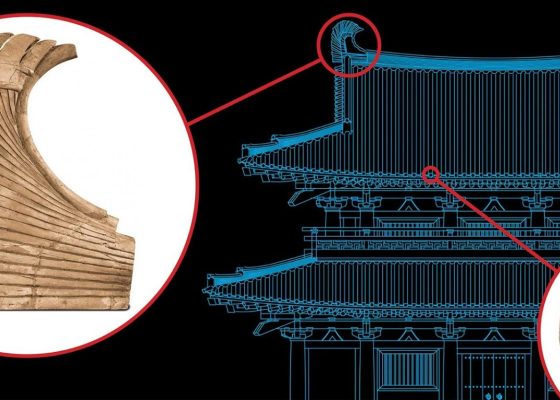


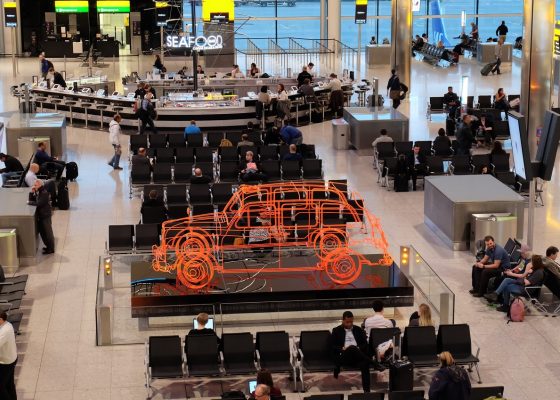
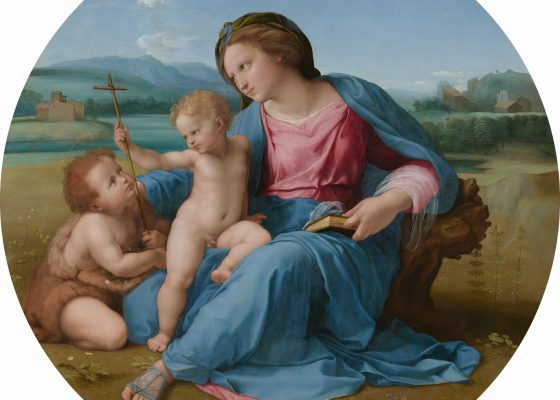
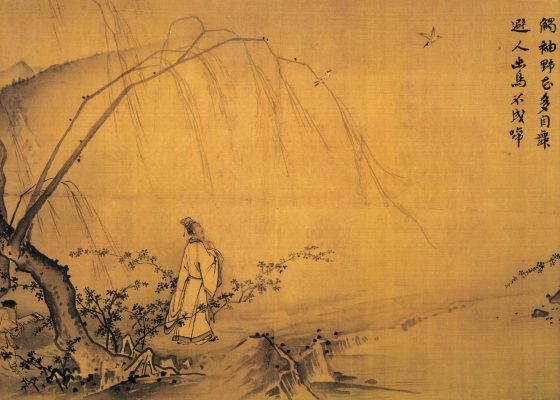



Cancel anytime


Using our website
You may use the The Middle Land website subject to the Terms and Conditions set out on this page. Visit this page regularly to check the latest Terms and Conditions. Access and use of this site constitutes your acceptance of the Terms and Conditions in-force at the time of use.
Intellectual property
Names, images and logos displayed on this site that identify The Middle Land are the intellectual property of New San Cai Inc. Copying any of this material is not permitted without prior written approval from the owner of the relevant intellectual property rights.
Requests for such approval should be directed to the competition committee.
Please provide details of your intended use of the relevant material and include your contact details including name, address, telephone number, fax number and email.
Linking policy
You do not have to ask permission to link directly to pages hosted on this website. However, we do not permit our pages to be loaded directly into frames on your website. Our pages must load into the user’s entire window.
The Middle Land is not responsible for the contents or reliability of any site to which it is hyperlinked and does not necessarily endorse the views expressed within them. Linking to or from this site should not be taken as endorsement of any kind. We cannot guarantee that these links will work all the time and have no control over the availability of the linked pages.
Submissions
All information, data, text, graphics or any other materials whatsoever uploaded or transmitted by you is your sole responsibility. This means that you are entirely responsible for all content you upload, post, email or otherwise transmit to the The Middle Land website.
Virus protection
We make every effort to check and test material at all stages of production. It is always recommended to run an anti-virus program on all material downloaded from the Internet. We cannot accept any responsibility for any loss, disruption or damage to your data or computer system, which may occur while using material derived from this website.
Disclaimer
The website is provided ‘as is’, without any representation or endorsement made, and without warranty of any kind whether express or implied.
Your use of any information or materials on this website is entirely at your own risk, for which we shall not be liable. It is your responsibility to ensure any products, services or information available through this website meet your specific requirements.
We do not warrant the operation of this site will be uninterrupted or error free, that defects will be corrected, or that this site or the server that makes it available are free of viruses or represent the full functionality, accuracy and reliability of the materials. In no event will we be liable for any loss or damage including, without limitation, loss of profits, indirect or consequential loss or damage, or any loss or damages whatsoever arising from the use, or loss of data, arising out of – or in connection with – the use of this website.
Last Updated: September 11, 2024
New San Cai Inc. (hereinafter “The Middle Land,” “we,” “us,” or “our”) owns and operates www.themiddleland.com, its affiliated websites and applications (our “Sites”), and provides related products, services, newsletters, and other offerings (together with the Sites, our “Services”) to art lovers and visitors around the world.
This Privacy Policy (the “Policy”) is intended to provide you with information on how we collect, use, and share your personal data. We process personal data from visitors of our Sites, users of our Services, readers or bloggers (collectively, “you” or “your”). Personal data is any information about you. This Policy also describes your choices regarding use, access, and correction of your personal information.
If after reading this Policy you have additional questions or would like further information, please email at middleland@protonmail.com.
PERSONAL DATA WE COLLECT AND HOW WE USE IT
We collect and process personal data only for lawful reasons, such as our legitimate business interests, your consent, or to fulfill our legal or contractual obligations.
Information You Provide to Us
Most of the information Join Talents collects is provided by you voluntarily while using our Services. We do not request highly sensitive data, such as health or medical information, racial or ethnic origin, political opinions, religious or philosophical beliefs, trade union membership, etc. and we ask that you refrain from sending us any such information.
Here are the types of personal data that you voluntarily provide to us:
As a registered users or customers, you may ask us to review or retrieve emails sent to your business. We will access these emails to provide these services for you.
We use the personal data you provide to us for the following business purposes:
Information Obtained from Third-Party Sources
We collect and publish biographical and other information about users, which we use to promote the articles and our bloggers who use our sites. If you provide personal information about others, or if others give us your information, we will only use that information for the specific reason for which it was provided.
Information We Collect by Automated Means
Log Files
The site uses your IP address to help diagnose server problems, and to administer our website. We use your IP addresses to analyze trends and gather broad demographic information for aggregate use.
Every time you access our Site, some data is temporarily stored and processed in a log file, such as your IP addresses, the browser types, the operating systems, the recalled page, or the date and time of the recall. This data is only evaluated for statistical purposes, such as to help us diagnose problems with our servers, to administer our sites, or to improve our Services.
Do Not Track
Your browser or device may include “Do Not Track” functionality. Our information collection and disclosure practices, and the choices that we provide to customers, will continue to operate as described in this Privacy Policy, whether or not a “Do Not Track” signal is received.
HOW WE SHARE YOUR INFORMATION
We may share your personal data with third parties only in the ways that are described in this Privacy Policy. We do not sell, rent, or lease your personal data to third parties, and We does not transfer your personal data to third parties for their direct marketing purposes.
We may share your personal data with third parties as follows:
There may be other instances where we share your personal data with third parties based on your consent.
HOW WE STORE AND SECURE YOUR INFORMATION
We retain your information for as long as your account is active or as needed to provide you Services. If you wish to cancel your account, please contact us middleland@protonmail.com. We will retain and use your personal data as necessary to comply with legal obligations, resolve disputes, and enforce our agreements.
All you and our data are stored in the server in the United States, we do not sales or transfer your personal data to the third party. All information you provide is stored on a secure server, and we generally accepted industry standards to protect the personal data we process both during transmission and once received.
YOUR RIGHTS/OPT OUT
You may correct, update, amend, delete/remove, or deactivate your account and personal data by making the change on your Blog on www.themiddleland.com or by emailing middleland@protonmail.com. We will respond to your request within a reasonable timeframe.
You may choose to stop receiving Join Talents newsletters or marketing emails at any time by following the unsubscribe instructions included in those communications, or you can email us at middleland@protonmail.com
LINKS TO OTHER WEBSITES
The Middle Land include links to other websites whose privacy practices may differ from that of ours. If you submit personal data to any of those sites, your information is governed by their privacy statements. We encourage you to carefully read the Privacy Policy of any website you visit.
NOTE TO PARENTS OR GUARDIANS
Our Services are not intended for use by children, and we do not knowingly or intentionally solicit data from or market to children under the age of 18. We reserve the right to delete the child’s information and the child’s registration on the Sites.
PRIVACY POLICY CHANGES
We may update this Privacy Policy to reflect changes to our personal data processing practices. If any material changes are made, we will notify you on the Sites prior to the change becoming effective. You are encouraged to periodically review this Policy.
HOW TO CONTACT US
If you have any questions about our Privacy Policy, please email middleland@protonmail.com
The Michelin brothers created the guide, which included information like maps, car mechanics listings, hotels and petrol stations across France to spur demand.
The guide began to award stars to fine dining restaurants in 1926.
At first, they offered just one star, the concept was expanded in 1931 to include one, two and three stars. One star establishments represent a “very good restaurant in its category”. Two honour “excellent cooking, worth a detour” and three reward “exceptional cuisine, worth a
Thank you for your participation,
please Log in or Sign up to Vote

123Sign in to your account